What’s magical about demand generation is, once business leaders think about the whole process of acquiring new prospects through leading them to a sale, they gain clarity about how they can scale their business. What’s more, they can clearly see where the gaps are in their demand generation process. This article will share each element of demand generation and hopefully provide insights that arm your company with new ways to think about business scalability.
Demand generation is the target of any effort you make to get customers excited about your business. It includes all of the steps involved in converting new prospects into repeat customers, requiring coordination between multiple disciplines in your company - including marketing, sales, and customer service - to delight your ideal customer with unique and valuable offers that generate visibility for your brand as an industry leader.
To successfully generate demand, your offer must be clearly differentiated from competitors and alternative approaches to solving the ideal buyer’s problem. That means not only having a high-value solution to their problem, but being able to communicate and deliver on that value with each and every customer interaction.
In this guide, we’ll give helpful tips and best practices for planning, implementing, and analyzing a demand generation strategy for any business looking to grow.
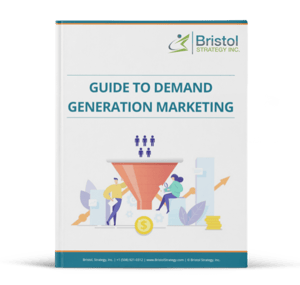
Demand generation is important because it improves business through three major elements:
Each of these elements feeds to the next, all with the same overarching effect on your business: growth.
Oftentimes, high demand for your business will translate into “buzz”. When word gets out that you have an offer worth buying, strangers will actively seek out your company, connecting you with people you might not already be targeting with your marketing efforts.
If there’s enough buzz around your business, some buyers will even bypass your marketing materials entirely and move straight into the sales process based on your reputation alone. Using information provided by their peers, new buyers can educate themselves about your company in advance, freeing up time for your team to focus on buyers who are getting stuck in the sales process. The key is in knowing how to measure and analyze the hype being created for your business, then adjusting your plan accordingly (see How to Measure Demand Generation below).
The impact positive buzz has on your business cannot be overstated. 84% of buyers say that they trust the recommendations of their peers over advice given directly from companies, making your brand’s reputation the #1 factor in your customer’s buying decision.

Today’s digital marketplace makes it easier than ever for buyers to compare different offers online, and with more digital competition, it is absolutely necessary that your brand stands out as a trustworthy option. It’s not enough to ask buyers to simply take your word for it - social proof is essential.
That’s why Bristol Strategy likes to think about demand generation using HubSpot’s new Flywheel model. While traditional sales funnels and pipelines end with the sale, the Flywheel model illustrates the power your existing customers have to help you grow your business at scale. After all, the top influencer of trust is a referral from a satisfied customer.
Happy customers will turn into your top promoters, bringing in new leads by advocating for your brand both in person and online. This kind of support provides strangers with proof that your company is reliable, making them more confident in their decision to move forward with a purchase.
All in all, the greatest quality of a successful demand generation strategy is that it makes scalable growth easier to achieve. If you know how and when to ask your buyers for feedback, you will build a network of loyal repeat customers who fuel your flywheel with qualified new leads, expanding your business beyond what traditional marketing and sales tactics alone can achieve.
Lead generation targets buyers in the awareness stage of the buyer’s journey, when a buyer encounters a pain point that triggers them to do more research online. It refers only to how you attract new leads to your brand, meaning your effort stops when a buyer connects with your company and becomes a lead in your database.
On the other hand, demand generation occurs at all stages of the buyer’s journey. It encompasses all of the actions you take not only to capture new leads, but also to nurture those leads into prospects, win sales, and encourage customers advocacy and support that will keep the cycle going.
Generating demand for your business successfully is a holistic process. It requires input from every brand of your company, as well as active engagement and alignment from each individual member of your team. When you plan your demand generation strategy, it’s important to involve every employee in your company to ensure that your team is on the same page. Otherwise, misalignment between team members can lead to mistakes and inefficiencies that can be costly to your profit margins and, more importantly, to your reputation.
Below we describe 9 different demand generation strategies, all of which fit together to bolster demand across your flywheel. While each of these strategies can help your business grow, it’s best to think of ways to combine and integrate each strategy across the various departments of your company. As you move through this list, think of how you can apply each strategy to your marketing, sales, and support departments to entice your users and capture important data about how your demand generation strategy is performing.
Identify your ideal buyer and give them a name. Then research and describe that person, analyzing both their demographics (age, role, location) and psychographics (attitudes, values, concerns, criteria) to create a complete picture of the factors that influence their buying decisions. When you understand the motivations of your ideal prospects and clients, you can better target the people you love working with most and learn how you can serve them better.

Give your users a better experience by providing them with clear and simple navigation on your website. A modern website design will make buying intuitive, leveraging a clean design with few distractions to guide users along a conversion path with easy-to controls. Having a website that is easy to navigate builds trust with your buyer, and by implementing images, colors, and fonts that resonate with your buyer persona, you can enhance their experience.
Create free, downloadable content for buyers at every stage of the buyer’s journey (these are often called “lead magnets”). Awareness stage content should help users research their specific problem, while consideration stage content answers common questions and pushbacks they may have before buying. Decision stage content will explain why your company is uniquely qualified to satisfy their specific needs, giving customized service and expertise to build their relationship with your brand.

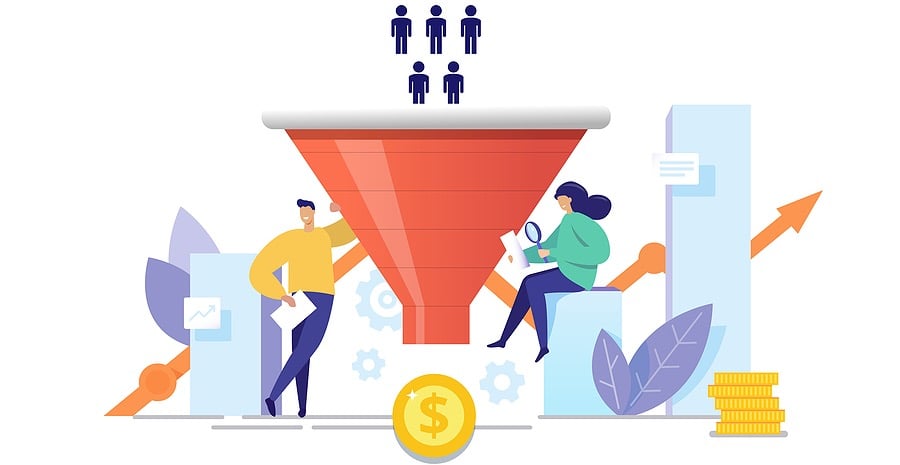
For more on testing, see How to Measure Demand Generation.
It’s unlikely that users will find your business for the first time on social media, but people who are already connected to your brand will check out your social media accounts to learn more about you. Communicate your unique brand identity by using the same fonts and colors as your website, staying active with fresh content and product updates that help users get to know your company. While social media may not generate many new leads, it’s a great opportunity to create brand awareness and engage with your buyers one-on-one.
For more on social media, see How to Measure Demand Generation.
Since demand can be generated at any stage in the buyer’s journey, it’s important to implement demand generation tactics at each stage and integrate them to make sure energy flows smoothly from one element to the next. Here are some ways that a buyer might move between stages in their journey:
Previously, the demand generation process has been shown by linear models that start with new leads and end in a sale. Now we illustrate demand generation as a cyclical process, factoring in the impact your existing buyers have on your brand awareness.
This graphic provides a framework for planning, implementing, and analyzing your demand generation plan with a description of each element below.
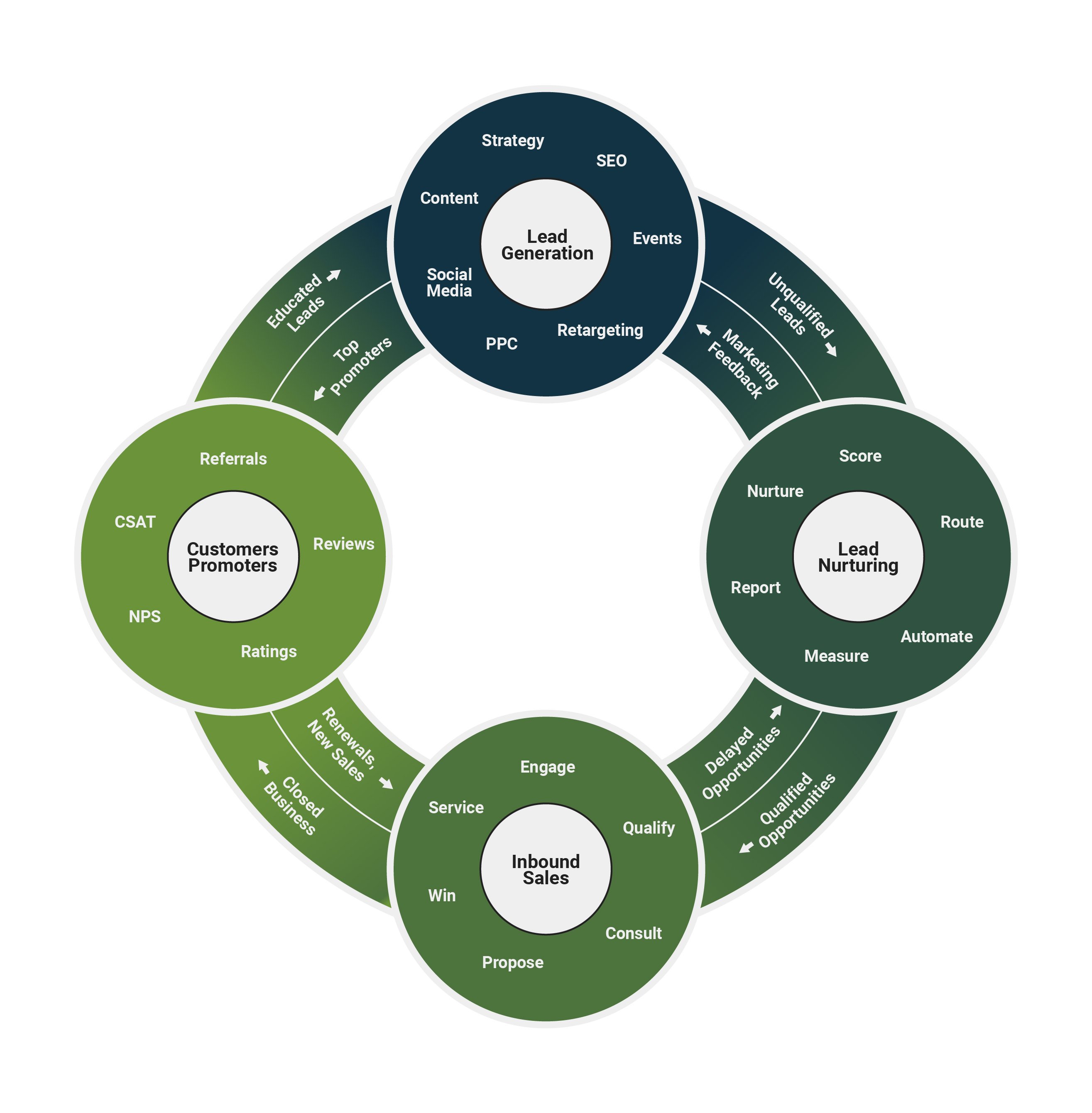
While it may seem difficult to quantify something as abstract as interest in your company, there are objective metrics you can analyze to measure how well your demand generation campaigns are performing for your business.
For every demand generation campaign you run, these questions can help you measure your success:
Analyze traffic on your website by looking at how many visitor sessions have been started.
Note that visitor sessions do not equal leads. Unless they are ready to give you their name and email address, these visitors are not yet candidates for lead nurturing or personal contact. Rather, sessions can tell you how visible your website is online and how well you are delivering value to your visitors once they find you.
One way to keep users on your website longer is to create targeted topic clusters - networks of blog articles and other pieces of content that expand on the topics covered in your pillar pages. By linking related content in topic clusters, you can create paths for visitors to find all of the information they need. They will also encounter conversion opportunities along the way, making it easy for them to become leads as well.
Many website hosts will let you filter your sessions according to traffic sources. Typically, the two best indicators of demand generation are referrals and organic traffic. Referrals will give you an idea of how customers are advocating for your business, while sessions from organic traffic will tell you how well you are delivering value for the keywords you’re targeting with your content.
Track your website sessions at regular intervals after starting a new campaign - for instance, 7 days, 2 weeks, and 1 month post launch. How do those numbers compare to this time last year? For contrast, you can also track your bounce rate to see how many people get to your website and immediately click away.
If your sessions from organic traffic are low, test out keywords with higher monthly searches in your titles, headings, and meta descriptions, or try retargeting content in your topic clusters.
On social media, you can track both new profile visits and reach, which tells you how many people see your articles. The best way to expand your reach with your ideal customers on social media is to engage with other industry professionals, both locally and globally with thought leaders and influencers.
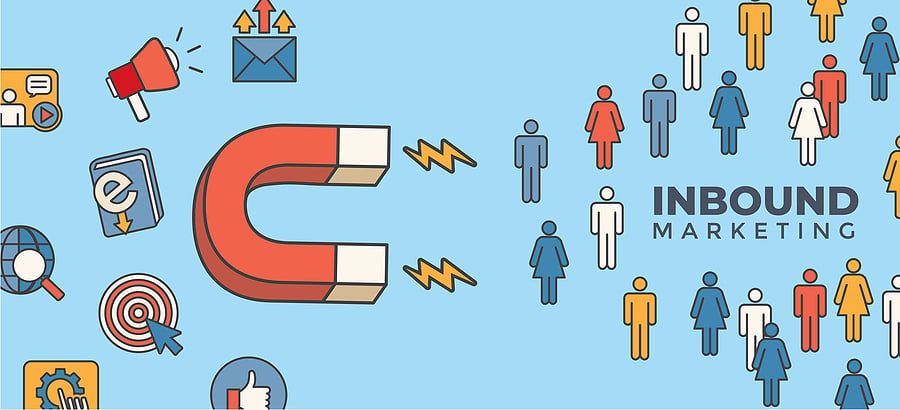
A lead can be anyone who gives you their contact information in hopes that you can help them solve their problem. They may fill out forms on your website or subscribe to emails, making them perfect targets for automated lead nurturing.
On social media, leads can be new followers or people who engage with your content by liking, commenting, sharing, or direct messaging. A major benefit of social media is that you can communicate directly with your buyers to say hi, answer questions, and even close sales almost instantly. However, since social media has largely become a pay-to-play arena, you shouldn’t rely on your social media pages to bring in qualified new leads, or at least not without targeted paid advertising. Instead, focus on solidifying your brand presence and engaging directly with your customers, competitors, and industry leaders.
If your website views are increasing but you’re not gaining any new leads, it might mean that your marketing strategy is misaligned with the value you have to offer in your content. You may try rethinking your buyer personas and exploring the triggers that cause them to seek solutions to the problems they are experiencing.
If traffic or email unsubscribe rates are increasing, it is most likely caused by a misalignment between your content and the value the visitors are seeking. Another option is to run surveys to understand more about what your target audience wants to learn about. Revisit your content strategy and assess how well you are delivering value to your ideal buyer. Is it the right value? Is it the right buyer?
If you’ve accurately described your persona’s needs and how you can solve their problem, but they’re still unsubscribing, that persona is the wrong fit for your business. Consider this an opportunity to cleanse the wrong kind of traffic to your page over time and start fresh by developing new personas and retailoring your content.
How quickly are leads moving through your set conversion paths, and are they following the paths you expect? If not, you may need to retarget your lead nurturing campaigns, or take a more direct approach to engaging your leads.
Two good indicators of lead nurturing performance are email open rates and click-through rates. While open rates can tell you about your strength of your subject lines and how serious the recipient is about buying, click-through rates will tell you how well you have planned and implemented your conversion paths.
Run A/B tests to see how your email recipients want to interact with your content. What kind of language do they respond to? Are they more likely to click a link, or a button? Once they click on a call-to-action, how long do they spend on that page? Does it have the information they are looking for?
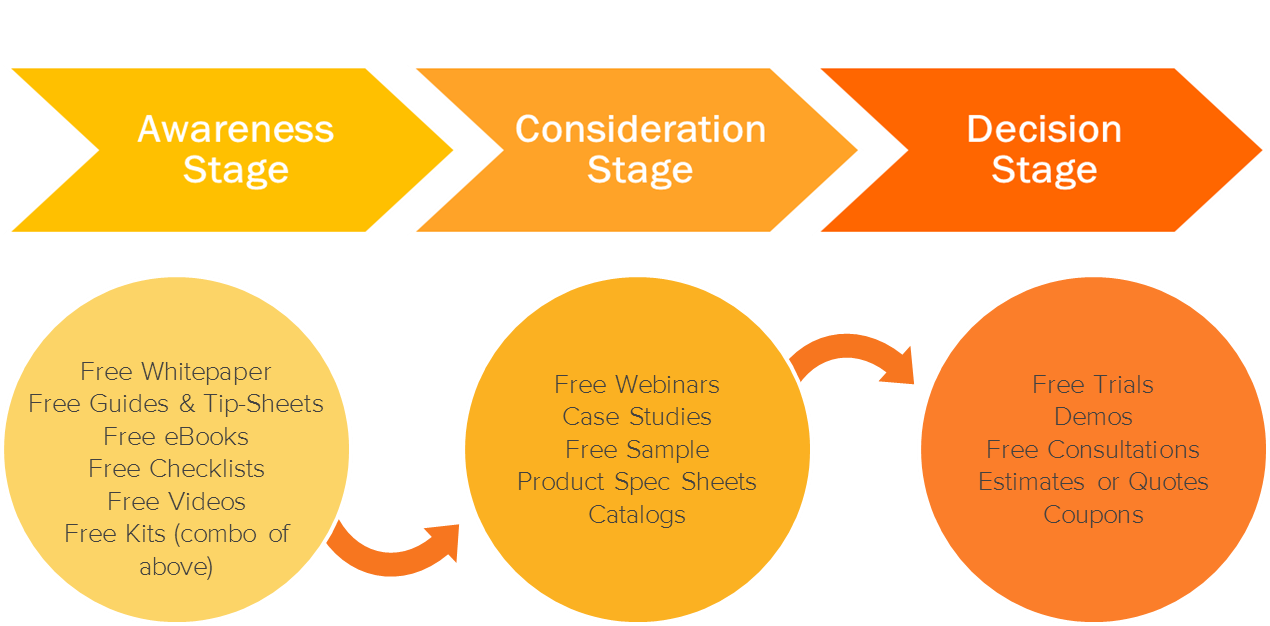
When users first encounter your sales team, what questions do they ask before buying, or are they usually ready to buy right away? This will help you understand how to decrease friction in your sales process by creating new content to answer common questions or automating your most repeatable conversations with chatbots and workflow-driven emails.
You can also include a field in your contact forms that asks users, “How did you hear about us?” That way, you can easily identify the sources that are most effective at increasing demand for your business, as well as sources to target with new campaigns. For instance, if few discovery calls are being booked by referral, you can offer an incentive program for your best customers to refer their friends and colleagues.
Keeping track of your deals in a running pipeline helps you both quantify your performance and identify points of friction to refine your sales process. It also assigns an actual dollar value to the deals you are losing. The more real that money feels, the more likely you are to take action to earn that money back.
Don’t just look at the numbers of new sales coming in. Pay extra attention to repeat sales, renewals, and whether the overall investment from your ideal customers is increasing. This is a much better indicator of the value you’re delivering to your target audience, making sure that your brand messaging is in alignment with the wants and needs of the buyers most qualified to help your business grow.
Customer satisfaction (CSAT) surveys present an enormous opportunity to improve your demand generation strategy. By evaluating what you did well and where you can improve - and giving each of those areas a value - you can learn how to better serve your customer so they can’t help but rave about you to others. Set aside time to analyze feedback from customer satisfaction surveys with your team to brainstorm specific solutions for boosting your net promoter score (NPS), like offering promotion incentives that both delight your customers and drive new sales for your business.
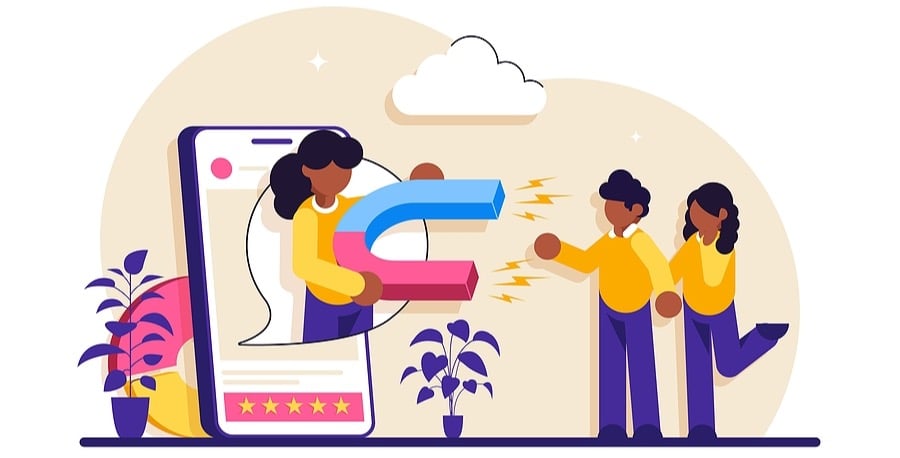
Successfully implementing a demand generation strategy involves all elements of your business - marketing, sales, and service. You must consider how each part of your company works together to fine-tune your strategy, factoring in quarterly checkpoints to analyze your efforts and gain feedback from every member of your team.
If you fail to engage your whole team in the success of your demand generation efforts, you risk running inefficiencies that may hinder growth - or worse, negatively impact your company’s reputation in the marketplace. But when implemented correctly, a demand generation program can create a self-sustaining engine driving new customers and repeat sales that will help you scale your business.
At Bristol Strategy, we are a full-funnel inbound (marketing, sales, and service) agency that has helped numerous companies reach the next level of growth. Interested in learning more? Reach out to us today to learn more about our unique approach to helping businesses grow.

Ask us about our unique approach that creates a full-funnel "inbound" engagement model for your business that attracts and converts digitally engaged prospects.